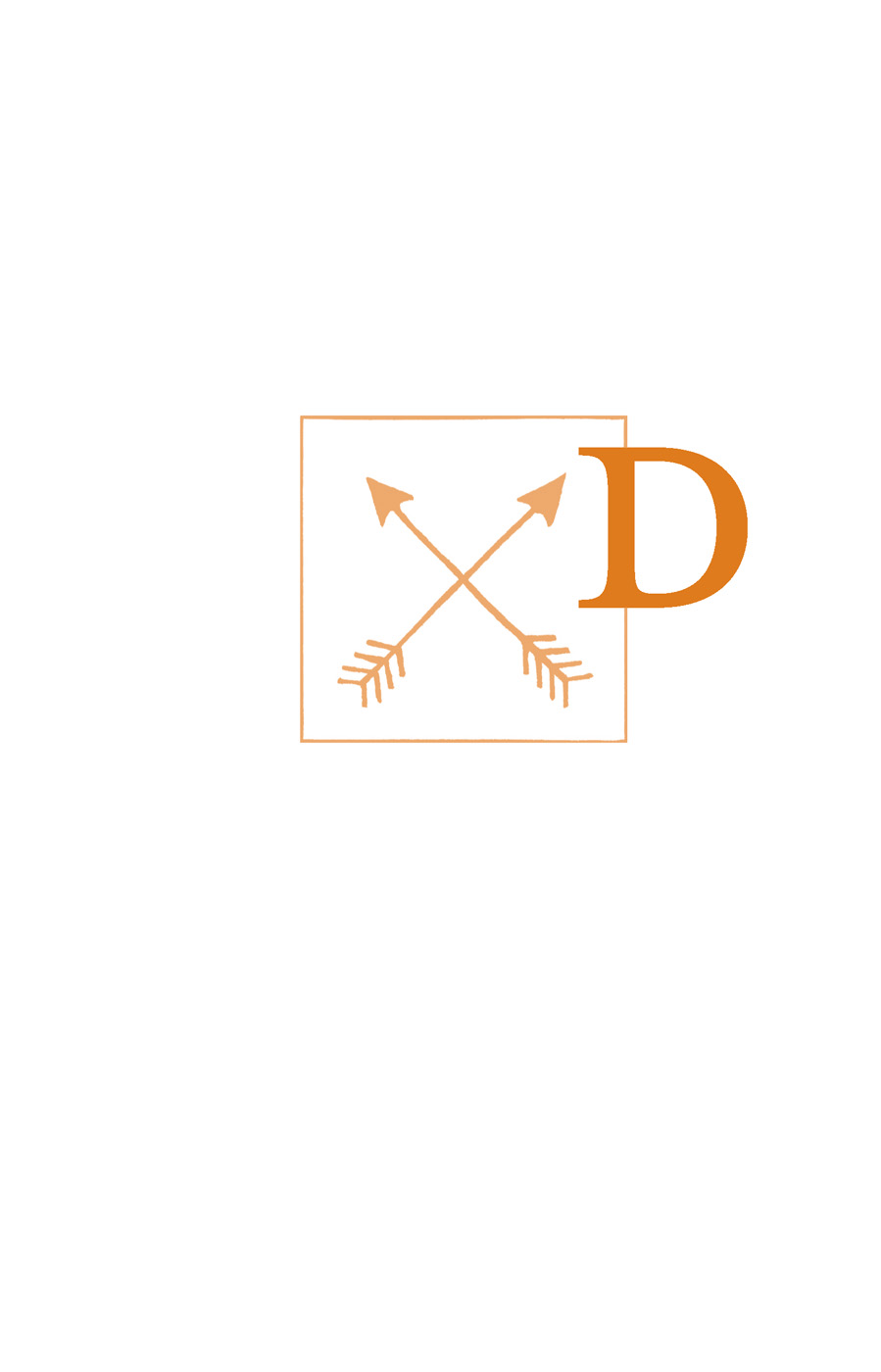
DAKOTA
The Sioux were one of the largest and most powerful of all the tribes, and divided up into several subgroups, including the Dakota, Lakota, and Nakota.
The Dakota themselves divide further, into the Eastern Dakota, the Santee, the Teton, and the Yankton.
The main group of the above was the Teton, which again divided up; these further divisions encompassed the Blackfeet, Brule, Hunkpapa, Miniconjou, Oglala, Sans Arc, and the Two-Kettle.
When you see a “generic” image of a Native American, it’s usually a Dakota Sioux that provides this image. The full headdress of eagle feathers, the decorative moccasins, and the fringes are all part of the Dakota apparel. The delicately strong features of the Dakota also lent themselves to the European idea of the typical Indian: chiseled cheekbones, hooked nose, athletic stance, and wiry build. In part, this stereotypical “Indian” was due to the attentions of Buffalo Bill Cody, who admired and respected the Dakota and used them in his Wild West shows. Since for many people this was the only circumstances in which they would ever see a “real” Indian, they assumed that all Native Americans looked the same.
It was the Dakota, too, who gave the word tipi to the white man and to the rest of the world. He also introduced the white man to the peace pipe, elaborately painted and decorated robes made of buffalo hide, and decorated war ponies.
Fierce and skilled warriors, the Dakota warred almost all the time, either with other tribes or with the white settlers. They fought on the British side in the 1812 war, and in 1862, under Chief Little Crow, they killed as many as 1,000 American settlers and soldiers.
There was another serious uprising in the 1880s. Although the U.S. Government had issued a treaty forbidding white settlers to encroach onto Indian territory in the Black Hills of the Dakota, when gold was discovered there all hell was let loose as the gold prospectors invaded the territory despite the treaty. This would ultimately lead to the great Battle of Little Big Horn, the defeat of General Custer, and the fatal Ghost Dance craze.
DAKOTA GOLD RUSH
There had been whispers of gold in the Black Hills of Dakota for some time, at least as far back as the late 18th and early 19th centuries. There was also hearsay that a Catholic missionary had actually seen Indians carrying lumps of gold in the area, in the 1860s.
Whatever the case, the Treaty of Fort Laramie had confirmed in 1868 that the Black Hills area belonged to the Sioux and, strictly speaking, the possibility of gold should not have mattered since the area was officially out of bounds to the white man.
But the possibility of gold, despite the treaty, meant that white men continued to sneak into the Sioux territory. A small quantity was discovered in South Dakota just six years after the treaty was signed; officially, the “Gold Rush” started in this year, 1874.
The first major expedition was led by General George Armstrong Custer, who would subsequently be defeated by the Indians at the Battle of Little Big Horn. For now, though, Custer had gold in his sights and arrived in Dakota accompanied by a thousand men consisting of prospectors and journalists. They found the small amount of gold mentioned above, but believed there must be more; as they traveled they left a trail of small towns in their wake including Pactola, Hill City, and Sheridan. Things reached fever pitch when they got to Whitewood Creek and the town of Deadwood in the Black Hills. Here, the prospectors seemed to strike gold wherever they put a spade in the ground. The first wave of miners had claimed all the land in the area within two years—despite the treaty—and thousands poured into the area, hoping to get lucky.
The gold that was discovered at Deadwood and Whitewood took the form of loose pieces, found among stone and rubble. But these shards must have come from a larger supply further upstream. The first major outcropping of gold was found in 1876 at Lead in South Dakota; this find became known as the Homestake. The size of Homestake was such that over the next 120 years, 10 percent of the entire gold supply of the planet would be discovered there.
Prospectors continued to flood into the area … as for the Native Americans, any treaty with them was forgotten in the rush for the gold which was being stolen from under their very noses.
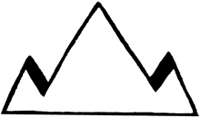
DARE, VIRGINIA
The first child of English parents to be born in the Americas, which happened on Roanoke Island in 1587. Virginia’s parents were Eleanor White Dare, the daughter of the governor, John White, and her husband Ananias Dare.
DATSOLALEE
A woman born with the name Dabuda, belonging to the Washoe tribe of north central California, changed her name to Louisa Keyser when, after being widowed, she married her second husband. Around 1875 she found work with a family of white settlers, the Cohn family, who owned a clothing store in Carson City, Nevada. Although Louisa was employed as a laundress, she was especially adept at making beautiful baskets; the Cohns, recognizing her talents, encouraged her by selling her work at their store. Soon the laundry work fell by the wayside, since the demand for the baskets exceeded all expectations. Her work was on a par with fine art; some of her baskets contained as many as 50,000 stitches, and she even designed a unique type of basket, the “degkup.”
Louisa became famous and was given a Washoe nickname meaning “broad hips,” Datsolalee. Consequently, it was under the name Datsolalee that she became the most famous and celebrated basket maker in the world.
DE SOTO, HERNANDO
1496–1542
A prominent Spanish explorer and the first person to lead a significant European expedition into the heart of America. He first arrived in the “New World” in 1514. Famed as a diplomat and an expert horseman, De Soto was also feared for his cruelty and brutality.

DECOY DUCKS
In Nevada, in 1924, archeologists discovered decoy ducks that proved to be approximately 2,000 years old. They were made from feathers, reeds, and twigs, and are believed to have been used in exactly the same way as their modern-day counterparts: to lure ducks to a certain area so that they are easier to catch.
DEKANAWIDA
There is a great deal of mystery and even mythology around the man named Dekanawida, who is also known as “The Great Peacemaker.” There is also a great deal of conjecture about certain aspects of his life. In the Haudenosaunee language the name Dekanawida meant “two rivers flowing together.”
Tradition holds that Dekanawida was the founder of the Haudenosaunee, or Iroquois Confederacy. Historical detail about Dekanawida is hazy; even the tribe he belonged to is not known for certain, and some accounts even suggest that, like Christ, he was the subject of a virgin birth; thus, a superhuman, almost Godlike status is accorded him. By all accounts, though, Dekanawida was a great prophet and visionary who was able to bring several warring tribes to peace with one another under the title of the Iroquois Confederacy. He is also alleged to have called for an end to cannibalism.
Hiawatha, a follower of Dekanawida, is said to have been the first person to be “converted” to the cause of peace by him. Hiawatha was a convincing orator, a skill which would prove essential in disseminating the message of The Great Peacemaker.
The first people that Dekanawida approached to preach his message of unity to were the Mohawk. A legend describes an incident in which The Great Peacemaker convinces the tribe of his sincerity: climbing a high tree above the site of some dramatic rapids, Dekanawida told the Mohawk men to chop down the tree. This they did, and Dekanawida was plunged into the boiling waters. Thinking him dead, the Mohawk were impressed when he appeared the next morning sitting by the campfire as though nothing had happened. The Mohawk became the first tribe to belong to the Iroquois Confederacy.
One of Dekanawida’s early prophecies took the form of a vision in which a white snake came to the land of the Indians, making many promises; these promises, prophesied Dekanawida, would be broken.
DEOHAKO
Deohako is the Seneca word for the “life supporters,” the crop of beans, corn, and squash which mutually supported and fertilized each other, and were also known as the “Three Sisters.”
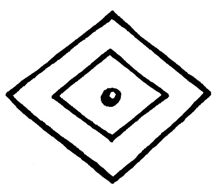
DIGGING STICK
The Native Americans have always been great foragers, able to use many wild plants as resources for both food and medicine. The digging stick was an invaluable tool: a stout stick with a carved, pointed end, used for prying roots from the ground.
DOG SOLDIERS
Among all the Plains tribes, it was the Cheyenne who were probably the most warlike. Although they tended to be fewer in number than their adversaries, their tactical and strategic fighting, akin to guerrilla warfare, probably caused more trouble for the Europeans than the tactics of any other tribe.
Many tribes were organized into different societies and organizations. Because of the warlike nature of the Cheyenne, it made sense that one of these groups was a society of warriors: the Dog Soldiers. Most Dog Soldiers belonged to the Cheyenne, but other tribes, notably the Kiowa, had them too. The Dog Soldiers Society of the Cheyenne was called the Homitaneo.
There’s a legend attached to the origins of the Dog Soldiers. The story goes that it was the time for societies to be formed within the tribe; this was generally done by the elders of the tribe and the medicine men. But one young brave, of no standing whatsoever, announced that he too wanted to start a society. But he had no idea how to go about it, and was shunned by the others. Still he was compelled to establish his society, and, sitting in the center of the encampment, he meditated and prayed to the Great Spirit to help him. As he sat, he started to sing one of the sacred songs of the tribe; people noticed that the dogs, near and far, responded to his song with howls and wailing. The boy sang all night; when he got up to leave the circle, all the dogs gathered around him, following. He walked all the next day and night, the dogs with him. At dawn, he stopped by a river, and sat down with his back against a tree trunk. The dogs formed a semicircle around him and also laid down to rest. Then an even more mysterious thing happened: a lodge took form in front of the young man, built from timber and covered in buffalo hides; the tree against which he was sitting was encompassed by the lodge.
The dogs rose and entered; once inside they took on human form, sang songs to the brave and described rituals to him. They also told him what to do and what to wear. This otherworldly instruction lasted for three days and three nights, and the young brave was blessed by the dog-men.
Word had got back to the rest of the tribe about the supernatural camp, and they came in search of it. As they approached, though, the lodge disappeared and the dogmen transformed back into dogs. However, the Society of the Dog Soldiers was established.
In appearance, the Dog Soldiers wore a “uniform” of sorts: this consisted of a feathered warbonnet, breechcloth, leggings, moccasins, and a whistle made from an eagle bone, worn around the neck. The Society had one chief who had seven assistants, four of whom wore fringes of human hair attached to their leggings. The Dog Soldiers acted as a police force within the tribe, punishing any transgressions.
In general, the Society enjoyed the membership of approximately half the fighting men of the Cheyenne. Sticking to traditional values, the Dog Soldiers eschewed the weapons and ways of white men and swore that they would never live on a reservation.
DOHOSAN
1805–1866
Also known as “Little Bluff,” Dohosan was a chief of the Kiowa tribe. He would go on to become possibly the most important leader of this people. He first became chief—which for the Kiowa was a hereditary role—after his predecessor, Dohate, was deposed from that position as a consequence of an Osage attack.
Dohosan had scant respect for the white settlers, believing that their actions were detrimental to the Native Americans. He believed that his people should resist the encroachments of the settlers and fight to keep their lands, their traditions, and their rights. Despite this, he did sign several treaties with the white settlers.
In one particularly noted incident, Dohosan managed to repel an attack on a Kiowa reserve led by Kit Carson, the one-time fur trader, Indian agent, and scout who became a Union soldier, with a force of 300 soldiers. Dohosan had not intended to end up embroiled in the fight, since he was only a visitor at the reserve.
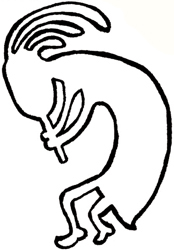
DREAMCATCHERS
Most of us are familiar with the mass-produced dreamcatchers that are readily available in gift stores all over the world. The actual origin of the dreamcatcher, though, as a Native American artifact rather than a tourist souvenir, lies with the Ojibwe or Chippewah peoples, and evidence of it goes back to at least A.D. 700.
The original dreamcatcher is a long way from the uniform velveteen and dyed feather varieties that have never seen a Native American person. The original item is hand-made, a smallish tear-shaped hoop constructed of bent wood, with the “web” part made of sinews or of a “string” made from plant fibers such as nettle, woven into a shape that is reminiscent of a miniature snowshoe, with feathers, beads, shells, and any other sacred objects added to the design. Used as a protective charm for small babies, the dreamcatcher was intended to fall apart as the child reached an age where he or she should be able to rationalize his or her own bad dreams. The dreamcatcher was believed to act as a filter for nightmares, which would get caught in the threads, allowing only the “good” dreams to reach the sleeper. Alternatively, the nightmares would pass through the holes and out of the bedroom window, leaving the happy dreams to slide down the feathers and into the head of the dreamer. Dreams are an important part of life for Native Americans, so much so that an Ojibwe child would not be named until the person responsible for naming the child was given it in a dream.
In the Ojibwe language the dreamcatcher is called the bawaajige nagwaagan, or “dream-snare.” The dreamcatcher really started to become popular in the 1970s, and now just about every tribe makes them; the dreamcatcher has become a symbol of the Nations themselves and has spread way beyond its Ojibwe origins, despite the fact that it’s not actually a longstanding tradition in most Indian cultures. The ubiquity of the dreamcatcher as a symbol of the First Nation people was underlined when it was used in the official portrait of Ralph Klein, premier of Alberta, Canada from 1982 to 1996.

DREAMER RELIGION
Smohalla, a native of the Wanapam people, had a vision sometime during the 1850s. Smohalla said that he had visited the world of spirit and had returned only to teach what he had learned. In common with other teachings of leaders such as Neolin, of the Delaware, and Tenkswatawa, of the Shawnee, Smohalla’s message was that Native Americans should reject the ways of the white men, including their methods of agriculture and their use of alcohol, and return instead to their own traditional values and ways of living. Smohalla also predicted the resurrection of all the Native Americans who had suffered and perished at the hands of the white men. This message would also be a key part of the Ghost Dance Movement, which began just a short while later. These visions, claimed Smohalla, came to him from the dreams that he experienced in the spirit world—this gave this religion its name.
DREAMS
Throughout all Native American cultures we see, again and again, just how important dreams and visions are. The Great Peacemaker, Dekanawida, had a dream in which he saw a huge pine tree: the roots of the tree were the five nations he would unite in the Haudenosaunee. At the top of the tree was an eagle, keeping a watchful eye that none of the Nations should break the peace.
As well as the deliberate seeking of dreams by means of the vision quest, naturally occurring dreams are also seen to be very significant. The belief in a guardian spirit or guide was strong, and it was believed that these guides could contact their charges in dreams. A Jesuit missionary, writing in 1668 about the Seneca people, said:
“The Iroquois have, properly speaking, only a single divinity—the dream. To it they render their submission and follow all its orders with complete exactness.”
A dream was considered a kind of gift of information or instruction from the world of spirit, and therefore it was important to obey these instructions by making the dream unfold in waking life. Dreams could foretell future events, and could give the individual as well as his or her people instructions as to what and what not to do. Dreams, therefore, were brought into tribe council meetings and discussed. A battle, a hunt, a trading expedition were all the sorts of endeavors that would be carried out according to the information given in a dream.
The Huron believed that every human being had not one but two souls. One had the function of energizing and animating the physical body, whereas the other could reach out beyond the material world and into the spiritual realms. This soul, it was believed, would leave the body during sleep to communicate with that spirit world, and the dream was the end result. If the dreamer unified the “dream” with the waking world, then the two souls would work together in harmony to make a person whole. Illnesses and diseases were attributed to the sufferer not allowing his or her two souls to communicate correctly.
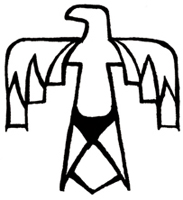
DUGOUT
A dugout is a type of canoe made, literally, from a log that has had its insides dug out or hollowed. Many different Native American peoples constructed dugouts. The method of making the dugout was the same, though, no matter the people. First, a suitable tree was felled. Then the timber was burned strategically, the burned parts being chipped away with small axes and chisels. Once the trunk had been hollowed out enough, it was filled with water. The water was then heated by dropping hot stones into it. This made the timber soft enough for the canoe to be shaped. This was done by bracing struts horizontally along the inside of the structure. Once the water had cooled, it was tipped out, and waterproofing measures taken if necessary. The prow, or stern, was made from logs that were carved and affixed to the front of the vessel.
DUWAMISH
Originally, the Duwamish—part of the Salishan language family—lived along the shores of Lake Washington, the Black Cedar River, and Eliot Bay, what is now the waterfront area of the city of Seattle, and along the Duwamish River, after whom they were named. Duwamish means “people of the inside,” which refers to a band that lived inland away from other groups. The name was adopted by an alliance of different bands and extended to embrace the entire people.
The Duwamish organized themselves into a complex hierarchy including a pecking order of nobles, commoners, and slaves. They lived in settlements of plank houses with a central “common” building for meetings and ceremonies, which included the potlatch. They used canoes from which to fish the rivers; these canoes were made to be as comfortable as possible since long periods were spent in them.
The later part of the 18th century saw British and Spanish explorers realize the wealth of the area, and settlers were established on Duwamish territory by the 1850s. One of the most important Duwamish chiefs was Seathl, for whom the city of Seattle was named.